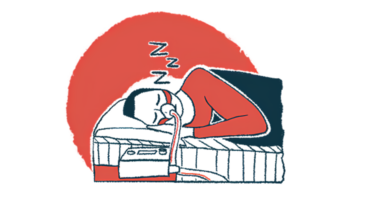Obstructive Sleep Apnea in Young PWS Patients May Be More Frequent Than Thought, Study Contends

Obstructive sleep apnea is the most frequent sleep breathing disorder in Prader-Willi syndrome (PWS) pediatric patients, according to an Italian study.
The results suggest that sleep disorders may be more severe and frequent in PWS patients than previously thought, stressing the importance of larger studies to clarify this and to find the most appropriate clinical approach.
The study, “Severe obstructive sleep disorders in Prader-Willi syndrome patients in southern Italy,” was published in the European Journal of Pediatrics.
PWS is a rare genetic disorder that affects appetite, growth, cognitive function, and behavior. It is characterized by low muscle tone, short stature, underdeveloped sexual organs, mild intellectual and learning disabilities, and a constant feeling of insatiable hunger, which can lead to excessive eating and life-threatening obesity.
Individuals diagnosed with PWS often experience sleep and respiratory problems, and are more likely to have sleep breathing disorders, such as obstructive sleep apnea (OSA) and central sleep apnea (CSA).
Sleep apneas are pauses in breathing while asleep. They can cause severe symptoms, including excessive daytime sleepiness and fatigue, and cardiovascular problems.
While OSA is caused by the relaxation and narrowing of the throat, causing a physical obstruction, CSA is due to communication problems between the brain and the breathing-related muscles, failing to induce inhalation.
OSA in PWS patients is thought to be a result of a combination of altered facial features, low muscle tone , which can lead to insufficiency of respiratory muscles, and obesity, which can result in pharyngeal narrowness. CSA seems to have an additional cause related to impaired brain function.
Growth hormone treatment has become a standard therapy for PWS, improving body composition, muscle tone and strength, cognitive function, and ultimately quality of life. While most patients with PWS also show improvements in their sleep breathing disorders after treatment, some patients get worse.
The frequency and severity of sleep breathing disorders in patients with PWS, and an accurate association with possible causes, is not clear.
Now, researchers at University Federico II in Naples, Italy, investigated the prevalence and characteristics of sleep breathing disorders in 14 patients (aged from 8 months to 17 years) diagnosed with PWS.
The team analyzed patient’s demographic and clinical data, as well as chest and abdominal movements, nasal airflow, levels of oxygen in the blood, heart rate, and the number and type of apneas during a 12-hour nocturnal sleep.
Thirteen patients (92.9%) showed sleep breathing disorders, three with mild OSA (21.4%), six with moderate OSA (42.9%), and four with severe OSA (28.6%). Only three patients (21.4%) presented sporadic CSA.
The team did not find any association between sleep respiratory disorders and growth hormone therapy or obesity, suggesting that low muscle tone and/or altered facial features might play a key role in the development of these disorders in PWS patients.
Also, sleep disorders in PWS patients appeared to be more severe than previously reported.
“OSA was the predominant sleep-related disorder in our PWS patients, not associated with age or obesity, and appeared more severe than previously reported” the researchers wrote.
“Further data are necessary in larger study populations to better define clinical and instrumental features of SDB [sleep breathing disorders] in PWS patients and to find the most appropriate therapy and follow-up strategies,” the team concluded.






